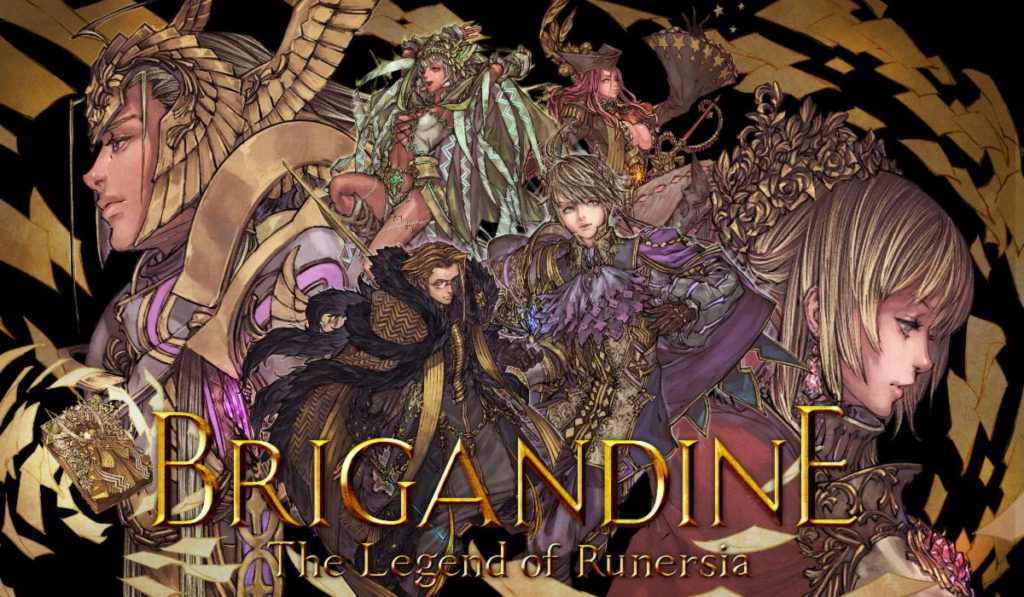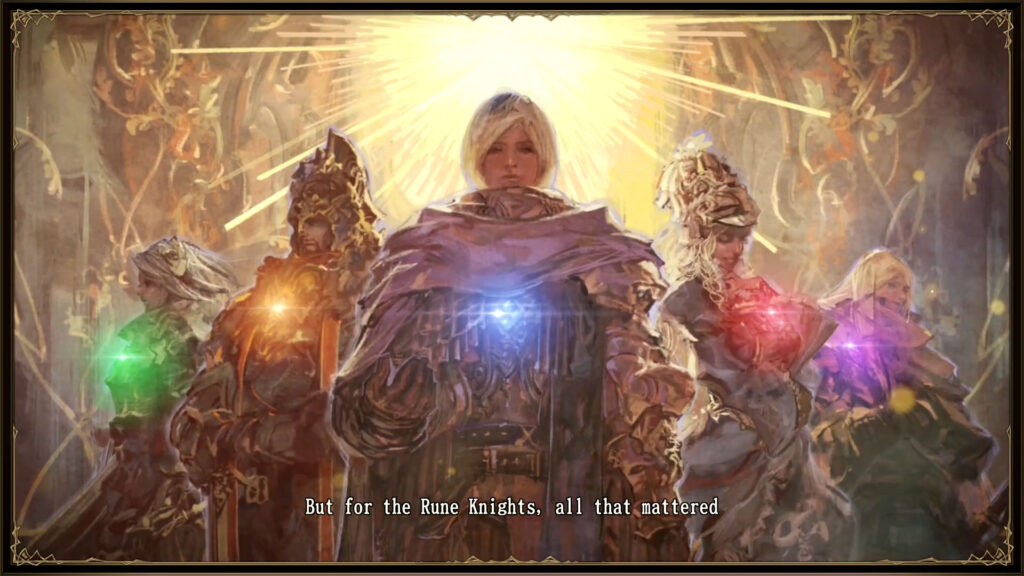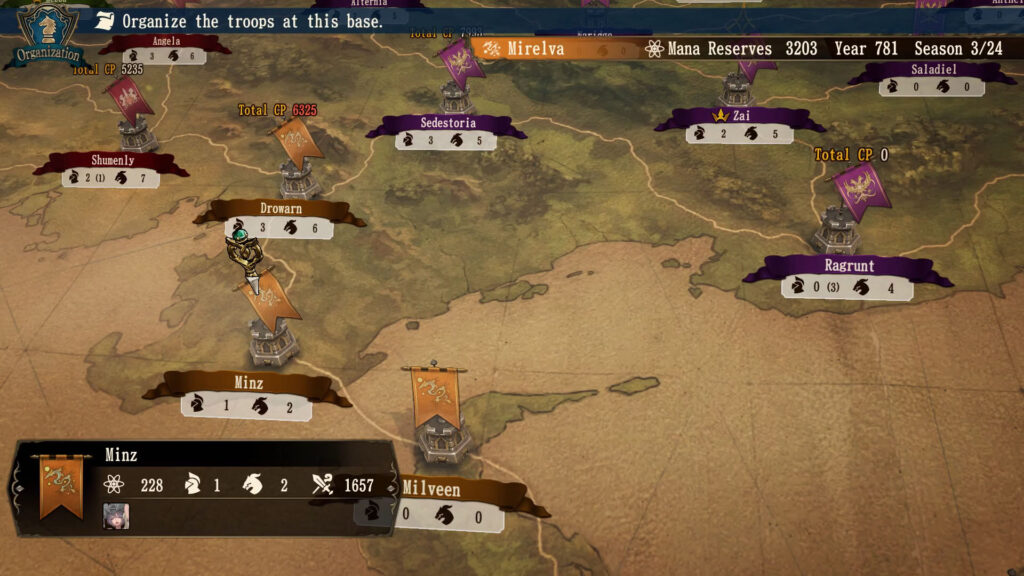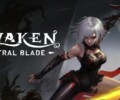
Developer: Matrix Software
Publisher: Happinet
Platform: PS4, Switch
Tested on: PS4
Brigandine: The Legend of Runersia (PS4) – Review
Brigandine: The Legend of Runersia is a sequel to Brigandine: The Legend of Forsena, a game that was released in 1998 for the first PlayStation. Brigandine: The Legend of Runersia is a strategy game where you’ll try to conquer a magical land, using armies consisting of monsters commanded by a human knight. This game has been developed by Matrix Software and published by Happinet.
Story
This game tells the story of the region of Runersia, a magical land where a magical resource called mana allows humans to rule over magical monsters. The human commanders are called ‘rune knights’. There are six different factions fighting for control over Runersia, and you choose one of these. Your goal is to unify Runersia by conquering all of it.
All factions have different reasons for conquering the lands. The stories of the factions are a bit cliché and their motivations for waging war are not always that logical, but each faction has its own charm, interesting characters, and unique story. Characters from each faction will also return in the stories of the other ones, so you’ll see some familiar faces when playing through multiple stories. It takes quite some time to play through the campaign of one faction, so if you want to experience all the stories and get acquainted with all the characters, you’ll spend many hours on this game!
The overall story is being told via animated cutscenes with a narrator, and the story of the side you chose is told via conversations involving the main characters of your faction. The animations are simple, with 2D characters drawn in a beautiful manga style appearing on screen, with changing expressions to convey their emotions, and a clear indication of who is speaking each time. The characters are animated in a simple stylized manner to add visual interest to the scenes.
Graphics
Both the human characters and the monsters are drawn in a beautiful and detailed manga style. The characters have very expressive and extravagant outfits, fitting to their region’s cultures. The women are generally drawn in an overly sexy way. The different kinds of monsters all have a very unique look, mostly based on Western fantasy creatures. The monsters are really colorful, creative and often very cute.
In the phase where you’ll organize the actions and movements your armies will take, you’ll move around on an overview map of the region of Runersia. This is a map drawn in an antique-looking style, with the main settlements being represented as castles. During this phase, you’ll manage all of your armies and units by working your way through many menus. This feels a bit overwhelming at first, but the UI is actually well designed and insightful, which is an absolute necessity for a complex strategy game such as this.
During battles, you’ll have an isometric view upon the battlefield, which means you’ll watch and command the battle from above. Units have pretty & colorful animated 3D models which you can move around, and watch them attack each other with nice attack animations.
Sound
The soundtrack of this game is rather epic, but the music repeats after a while and it’ll get a bit repetitive. However, the great music still sets a mood fitting to the game. The sound effects during battle are also nice as the characters will make fighting sounds when attacking, and will every now and then scream their battle-cry, or speak a line. Voices are in Japanese.
All dialogues are narrated, with the game being fully voiced in Japanese. There will not be any subtitles for battle cries and short remarks of your characters, but whenever the story is being told, you’ll be able to read the whole story in English. Text appears as the characters are speaking, but you will be able to skip ahead if you are a fast reader.
Gameplay
Brigandine: The Legend of Runersia is a strategy game with RPG elements. You’ll try to conquer the lands by strategically planning attacks on vulnerable bases of the enemy. However, in order to do that, you’ll need to train your units and commanders, level them, give them skills, and equip them with powerful items. After that, you’ll move your armies around to strategic positions, and engage the enemy on the battlefield. All of this is held together by an overarching story, which will be told as you play through the battles.
This game is rather complicated, with lots of things you’ll need to manage in order to be effective as a combating faction. This game features an extensive tutorial, walking you through all aspects of the game. The tutorial takes some time to play through and seems rather overwhelming, but as soon as you start playing the game itself, you’ll quickly get the hang of it. During the game, you also have the option to read some explanatory screens detailing each combat phase and action you can take during the phase.
One turn is called a season, and consists of two phases: the organization phase and the attack phase. The organization phase shows you an overworld map, with all settlements you can move your armies to. At these bases you’ll be able to recruit monsters, form up and train your armies, or deploy armies to defend. In each base you can order your armies to complete quests, which grant experience, equipment, or even new commanders. You can also attack an enemy by moving your armies to an enemy base.
An army consists of one rune-knight commander with several units under their command. The commanders are humans, and the units are monsters. These monsters are typical fantasy creatures like ogres, goblins and dragons, but also centaurs, mermaids and unicorns. You’ll start out with a number of knights and monsters, but you’ll be able to recruit more monsters at bases, during quests, or capture them during battles. You’ll gain more rune-knights by doing quests, recruiting them for your army.
Battles play out on a hexagonal grid and you’ll be able to command each unit of your army separately. You can choose to move around, attack, use magic, skills, etc. A commander has a field of command around it, which makes the monsters much more powerful is they stay inside that area. There are also different terrain types that can benefit certain units, so you have to be strategic in planning your attacks and the movement of your units. Attacks happen as you command them, but retaliation strikes from the enemy happen directly in response when you are in melee range. Combat is turn-based, so after you have done all your moves, the enemy will come into action and move their units and execute attacks.
If the battle doesn’t go that well for your army, you’ll always have the option to retreat. Retreating will grant the enemy victory, and you have the chance to leave monsters behind on the battlefield. However, monsters defeated in battle will die at the battlefield, and a defeated knight will be out of the running for some time. The faction’s leader should always be protected, because when they are defeated, all units will automatically retreat.
Each rune knight and each type of monster will have unique skills and abilities in combat Your units will level up during battle as you fight, but you can also level them by doing quests. Units will grow stronger as they level up, but after a while, they will get access to new classes. Quests can also gain new equipment or powerful items for your armies.
Conclusion
Brigandine: The Legend of Runersia is a complicated game, with lots of depth. The battles themselves are challenging and strategic, where good placement and optimal use of each unit’s skills are essential. But next to this, the organization phase where you can plan your attacks and organize and train your armies, is even more important for achieving victory than the battles themselves. The overarching story adds a lot of interest to the game, since you really get to know your faction and even get familiar with the commanders you place on the battlefield. Overall, Brigandine: The Legend of Runersia is a great game for anyone who likes challenging strategic games.
Brigandine: The Legend of Runersia (PS4) - Review,1 Comment
Leave a Reply
You must be logged in to post a comment.










[…] is a JRPG that we previously reviewed on the PS4 and on the Switch. The game, also known as Brigandine: The Legend of Runersia, is a direct sequel […]